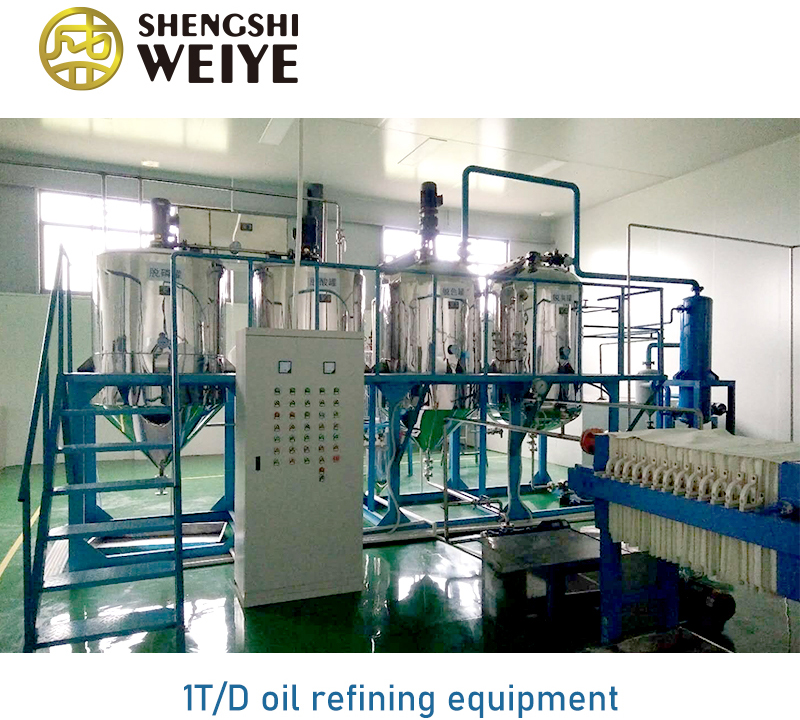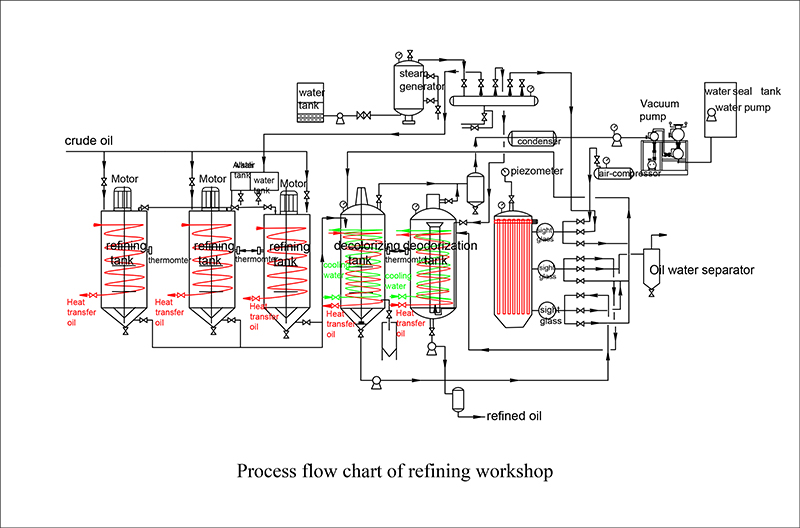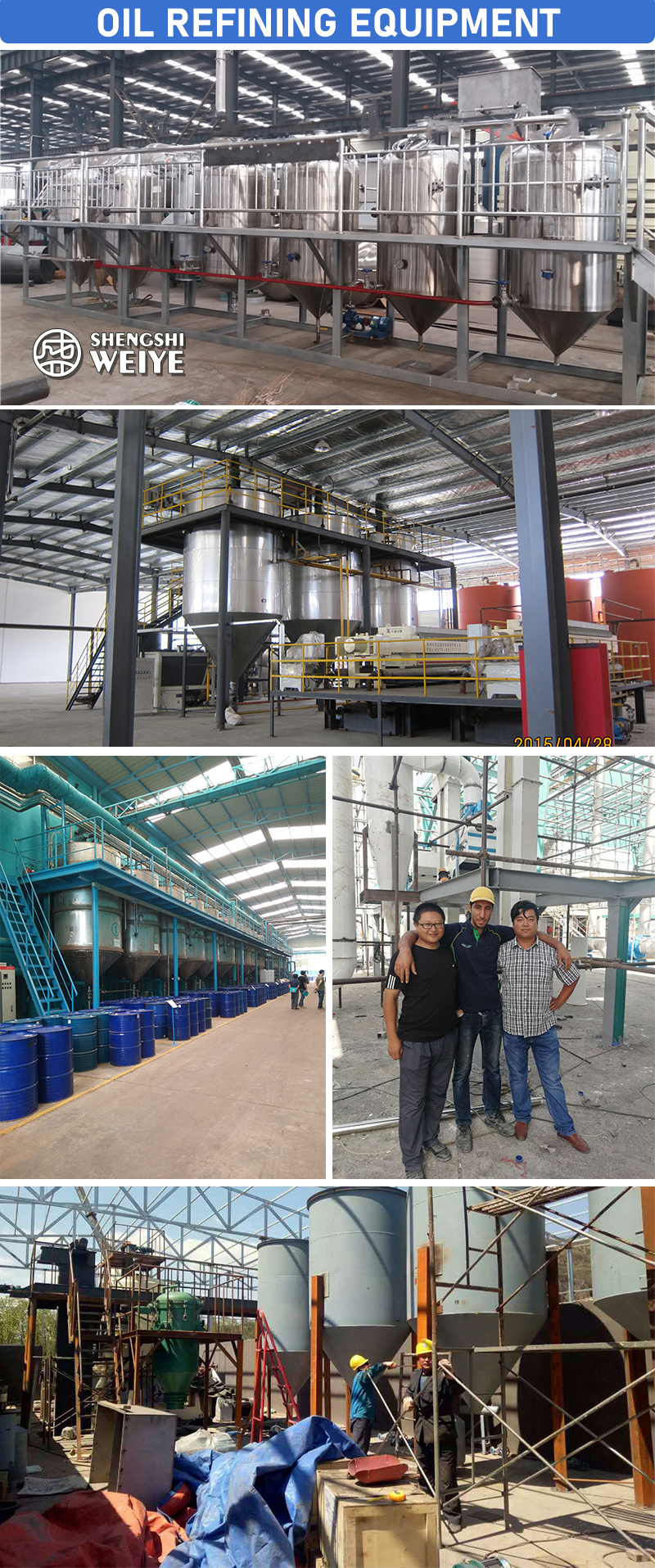The process of refining equipment is as follows:
Degumming process:
the process of removing colloidal substances from oil. In the removed colloid, phospholipid, calcium, magnesium, iron and other impurities are the main components. In short, hydrated degumming is to add a certain amount of hot water or diluted electrolyte solution to the oil by using the hydrophilic groups contained in lipid molecules such as phospholipids to make colloidal water-soluble lipids expand and condense, and then separate the lipids in the oil by precipitation or centrifugation.
Deacidification process:
when the oil is not fully mature and the oil is not processed and stored properly, it will cause the decomposition of oil and produce free fatty acids, thus increasing the acidity of oil and reducing the quality of oil. Acid value is usually used to reflect the content of free fatty acids in oil. Alkali refining is a refining method of neutralizing free fatty acids in oil by adding alkali to form fatty acid salt (soap) and water. Soap absorbs some impurities, precipitates them and separates them from oil. The precipitates formed are called soap feet. Deacidification by distillation is also called physical refining. This deacidification method does not need alkali neutralization, but uses the difference of relative volatility between triglycerides and free fatty acids to carry out steam distillation under high temperature and high vacuum, so that free fatty acids and low molecular weight substances are discharged with steam. This method is suitable for high acid value oil.
Decolorization process:
the pigments in oil generally include chlorophyll, carotenoids, flavonoids and anthocyanins. Some oilseeds also contain some unique pigments, such as gossypol in cottonseed. The most widely used method in industrial production is adsorption decolorization. Adsorptive decolorization is to add some surfactants with strong adsorptive capacity into the oil to adsorb the pigment and other impurities in the oil under certain process conditions, and remove the adsorbent and impurities through filtration, so as to achieve the purpose of oil decolorization and purification.
Deodorization process:
vacuum steam deodorization is the most widely used and effective deodorization method at home and abroad. It makes use of the great difference between the volatile rate of odor substances and triglycerides in oil. Under the condition of high temperature and high vacuum, with the help of the principle of steam distillation, the volatile substances causing odor in oil escape together with water vapor in the deodorizer to achieve the purpose of deodorization.
Dewaxing process:
The main property of wax is that its melting point is higher than that of triglyceride, and it is a solid viscous substance at room temperature. Wax can be dissolved in oil, and the solubility increases with the increase of temperature. At low temperature, wax will precipitate from oil and affect its appearance. In addition, wax will make the taste of oil worse and reduce the edible quality of oil. Dewaxing is based on the melting point difference between wax and oil and the physical property that the solubility of wax in oil decreases with the decrease of temperature. Crystal wax is separated by cooling and then filtered or centrifuged to achieve the purpose of wax oil separation.




